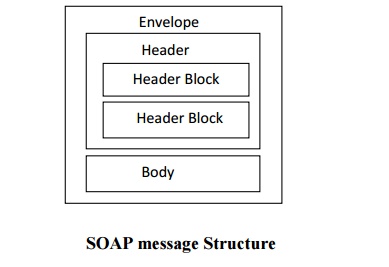Chapter: Computer Networks : Application Layer
Web Services
WEB SERVICES
Web Services, taking their name from the term for the individual applications that offer a remotely accessible service to client applications to form network applications. The two Web Services architectures are SOAP and REST discuss the technical meanings of those terms shortly.
The SOAP
architecture’s approach to the problem is to make it feasible, at least in
theory, to generate protocols that are customized to each network application—a
kind of mass customization. The key elements of that approach are a framework
for protocol specification, software toolkits for automatically generating
protocol implementations from the specifications, and modular partial
specifications that can be reused across protocols.
The REST
architecture’s approach to the problem is to regard individual Web Services as
World
Wide Web
resources—identified by URIs and accessed via HTTP. Essentially, the REST
architecture is just the web architecture. The web architecture’s strengths
include stability and a
demonstrated
scalability (in the network-size sense). It could be considered a weakness that
HTTP is not well suited to the usual procedural or operation-oriented style of
invoking a remote service. REST advocates argue, however, that rich services
can nonetheless be exposed using a more data-oriented or documentpassing style
to which HTTP is well-suited.
Custom Application Protocols (WSDL, SOAP)
The
architecture informally referred to as SOAP is based on Web Services Description Language (WSDL) and SOAP.2 Both of
these standards are issued by the World Wide Web Consortium (W3C). This is the architecture that people usually mean when they
use the term Web Services.WSDL and SOAP are frameworks for specifying and
implementing application protocols and transport protocols, respectively. They
are generally used together, although WSDL can be used to specify an
application protocol that uses a transport protocol not specified using SOAP,
and a SOAP-based protocol can transport a non-WSDL application protocol. WSDL
is used to specify application-specific details suchas what operations are
supported, the
formats
of the application data to invoke or respond to those operations, and whether
an operation involves a response. SOAP’s role is to make it easy to define a
transport protocol with
exactly
the desired semantics regarding protocol features such as reliability and
security.
Defining Application Protocols
WSDL has
chosen a procedural operation model
of application protocols. An abstract web service interface consists of a set
of named operations, each representing a simple interaction
between a
client and the web service. An operation is analogous to a remotely callable
procedure in an RPC system. An example from W3C’s WSDL Primer is a hotel
reservation web service
with two
operations, CheckAvailability and MakeReservation.
Defining Transport Protocols
Although
SOAP is often called a protocol, it is better thought of as the foundation of a
family of protocols, or a framework for defining protocols. As the SOAP 1.2
specification explains,
“SOAP
provides a simple messaging framework whose core functionality is concerned
with providing extensibility.” SOAP uses many of the same strategies as WSDL,
including message
formats
defined using XML Schema, bindings to underlying protocols, MEPs, and reusable
specification elements identified using XML namespaces.
·
A URI that identifies the feature;
·
The state information and processing, abstractly
described, that is required at each SOAP node to implement the feature;
·
The information to be relayed to the next node;
·
If the feature is a MEP, the life cycle and
temporal/causal relationships of the messages exchanged (e.g., responses follow
requests and are sent to the originator of the request).

A Generic Application Protocol (REST)
The
WSDL/SOAP Web Services architecture is based on the assumption that the best
way to integrate applications across networks is via protocols that are
customized to each application. That architecture is designed to make it
practical to specify and implement all those protocols. In contrast, the REST
Web Services architecture is based on the assumption that the best way to
integrate applications across networks is by applying the model underlying the
World Wide Web architecture (Section 9.1.2). This model, articulated by Web
architect Roy Fielding, is known as
REpresentational State Transfer(REST).
Related Topics